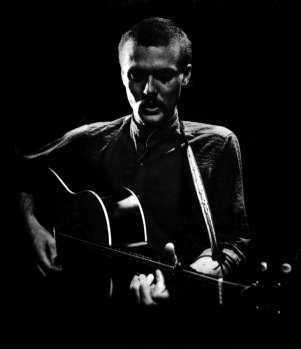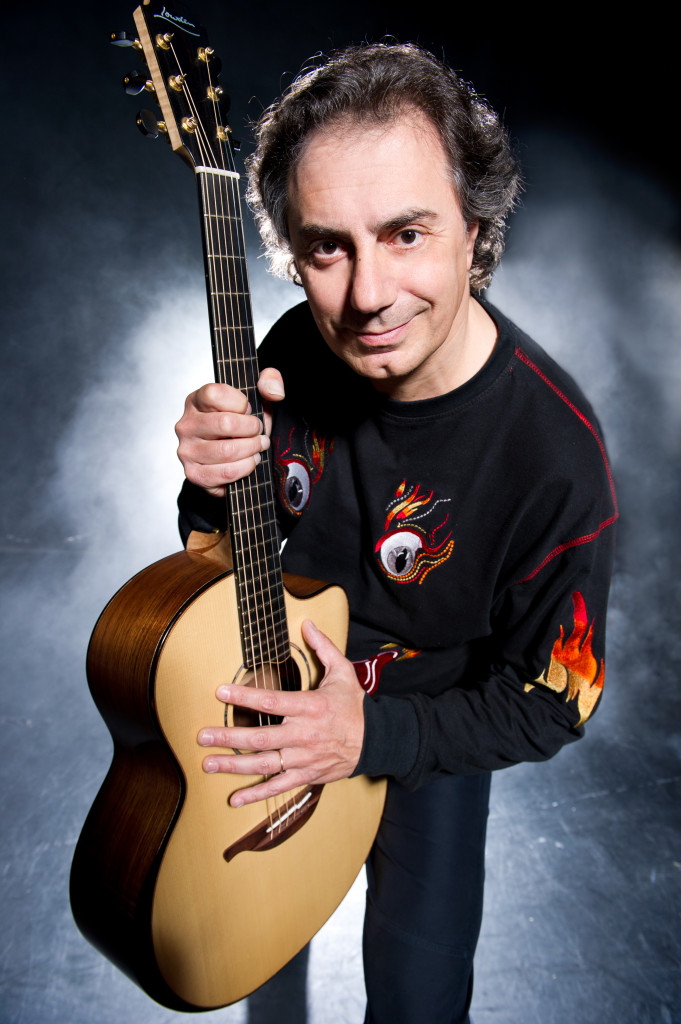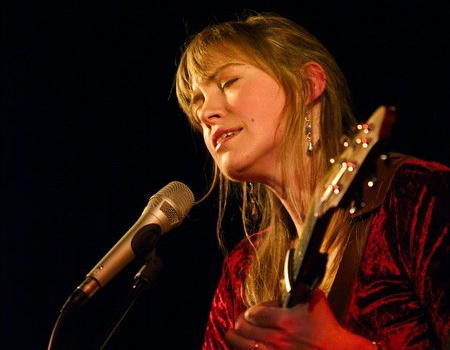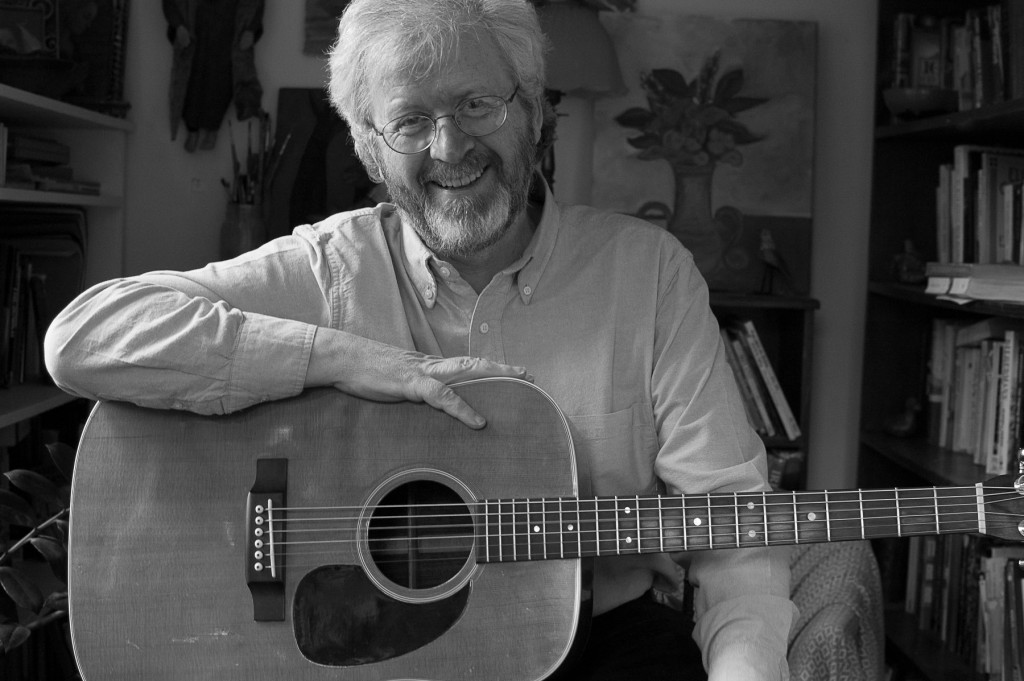“Everybody” knows that the standard tuning for guitar is EADGBE (low to high) and most guitarist are aware that there is more than one way to tune a guitar (or any stringed instrument for that matter). One of the most popular non-standard tunings is DADGAD. The December 2015 edition of ACOUSTIC GUITAR published the following article that profiled the DADGAD tuning and four of its famous advocates and performers. Here is an except from the internet download of the article:
The DADGAD Way: Davy Graham, Pierre Bensusan, Sarah McQuaid, and Daithi Sproule Talk Tuning
 A few years before George Harrison put world music on the pop charts with his 1967, Indian-inspired “Within You Without You,” from the Beatles’ landmark Sgt. Peppers album, another Brit, the late folk musician Davey Graham, had already invigorated western acoustic guitar music with his brilliant cross-cultural contribution, DADGAD tuning.
A few years before George Harrison put world music on the pop charts with his 1967, Indian-inspired “Within You Without You,” from the Beatles’ landmark Sgt. Peppers album, another Brit, the late folk musician Davey Graham, had already invigorated western acoustic guitar music with his brilliant cross-cultural contribution, DADGAD tuning.
Inspired by Graham’s travels in India and Morocco, and his subsequent introduction to the region’s lute-like oud, DADGAD revolutionized the folk genre by allowing the guitar to mimic the piping, or “droning,” sound that defines authentic Celtic music. The D-based, open-string DADGAD effectively transforms the guitar into a modal—rather than chord-driven—instrument, thus allowing for easier shifts between minor and major keys, with the open strings on either side of the treble and bass strings serving as the drone generator.
Embraced by such British folk greats as John Renbourn, Bert Jansch, and Martin Carthy, the genius behind DADGAD tuning is that Graham had offered up something akin to a tonal Rosetta stone: It was now possible to do justice to traditional Irish music on the guitar, particularly the outpouring of works by blind, 18th-century harper and composer Turlough O’Carolan. It wasn’t just Celtic music acolytes from the British Isles who appreciated the versatility and range that this alternative tuning provided. Joni Mitchell, David Crosby, Paul Simon, Buffy Sainte-Marie, Wings’ lead guitarist Laurence Juber, Jimmy Page, among many others, gave DADGAD a chance. (Page termed it his “CIA tuning,” for Celtic/Indian/Arabian.)
DADGAD has found its way into genres including classical, blues, gospel, and jazz, and into the hands of acoustic guitarists everywhere. As one of DADGAD’s most notable practitioners, French-Algerian-born Pierre Bensusan, advises “DADGAD is not a genre—it’s a tuning.”
@@@@@@@@@@@@@@@
PIERRE BENSUSAN :Making DADGAD His Own
Multi-award-winning guitarist, singer, and composer Pierre Bensusan, lauded by the LA Times as “one of the most unique and brilliant acoustic guitar veterans in the world music scene today,” is regarded as one of music’s greatest exponents of DADGAD. Almost every performance and recording of Bensusan’s is a celebration of DADGAD tuning. Currently on a world tour to mark his 40-year career, Bensusan’s style includes Celtic, folk, world, new age, and chamber music.
His Take on DADGAD: Bensusan has described DADGAD as a tool that “helped me to be identified, and to identify myself. It gives me confidence.” Introduced to DADGAD by a friend who had learned it from Graham, Bensusan was experimenting with different tunings at the time, anxious to settle on one that he could make his own. DADGAD won out.
Bensusan realized that embracing DADGAD meant he would have to relearn the guitar if he wanted to translate the new tuning style for an across-the-board repertoire of music normally played in standard tuning. It was a guitar lesson to-do list that included taking a second look at the neck, the chord shapes and positions, the sounds, and the intervals. He mastered the task and highlighted the journey in Pierre Bensusan Presents DADGAD Guitar. Published in 2000, it is primarily a songbook featuring comments and DADGAD selections from James Earp, Laurence Juber, Doug Smith, Bill Mize, David Surette, Eileen Niehouse, and Peppino D’Agostino, among others.
The pitfalls in the beginning, he notes, included fighting against “a ready disposition to fall into all the predictable trappings of such a modal tuning as DADGAD”—notably by doing the obvious, such as playing almost exclusively in the key of D. “If I wanted a key change, I’d simply use a capo,” he writes. But as Bensusan discovered, relying on capos limited the possibilities for chord voicings, which he recalled, “got me right back to the point of really learning the fret board. There is certainly nothing wrong with using a capo—sometimes you have to. Still, though, with a limited understanding of the fingerboard, it was very easy to get stuck in the ruts of standard positions and chords.”
Another challenge: the disposition of the open strings. While DADGAD tuning is famous for its open, ringing strings, that’s not always a plus: It can get in the way of the music, Bensusan advises. “You want to be able to control the sustain and the length of the sound,” he says. Bensusan’s goal was to make DADGAD “completely disappear. I don’t want there to be any active consciousness of the particular tuning I happen to be using. And I certainly don’t want my audiences to be distracted by it. You have to play the instrument—the music—not the tuning.”
Player Tip: “Virtuosity is not showing off what you can do on the guitar,” Bensusan told Acoustic Guitar last year. “Virtuosity is making the guitar and the musician completely transparent, and having the music just speak out. This is a high, high standard of virtuosity for me. The music is using you as a channel. So you have to be ready for it. Technically, you have to be ready. You work your ability, your tone. But when you play, all of this has to be forgotten.” Visit pierrebensusan.com for more information on his work, concerts, numerous songbooks, and more.
@@@@@@@@@@@@@@@
SARAH MCQUAID : She Wrote the Book on DADGAD, Literally
Born in Spain, raised in Chicago, and now living in rural England, Sarah McQuaid’s music is an eclectic mix that, as noted on her website, segues from original compositions “to a 1930s Cuban jazz number, a 16th-century lute piece, or an unexpected contemporary cover.” Regardless of the genre, the tuning is always in DADGAD. McQuaid is the author of The Irish DADGAD Guitar Book, described by the Irish Times as “a godsend to aspiring traditional guitarists.” She has developed two workshops: “An Introduction to DADGAD,” for players with little or no experience, and “DADGAD Song Accompaniment,” for experienced DADGAD guitarists. Her workshops have been held at music schools, festivals, arts centers, private homes, and other venues in the UK, Ireland, the United States, Holland, and Germany.
Her Take on DADGAD
“In my teens, I was a big fan of Windham Hill Records artists like Michael Hedges and Will Ackerman, and also of Joni Mitchell,” McQuaid says, “so I was tinkering around with different tunings all the time. Then, when I was 18, I went to study in France for a year, and quite by accident wound up singing and playing guitar with a traditional Irish band. At a festival gig somewhere in France, I got to chatting with a French guitarist, who said to me, ‘You know, most of the Irish guitar players these days are using DADGAD—you should try it.’” She did, and never looked back. “I tuned my guitar to DADGAD straightaway, started experimenting with chord shapes, and it was a real eureka moment—suddenly I could make all the sounds I’d been trying to make for years,” McQuaid says. “I loved the fact that it freed me up from the limitations of major and minor [and that] I could play in all these weird modal scales.”
McQuaid has been playing in nothing but DADGAD for more than 20 years. “I write all my own songs in DADGAD, and I play everything from Elizabethan ballads to blues in DADGAD,” she says. “It’s a wonderfully versatile tuning, especially when you get out of the mentality that you have to play in D all the time: E minor, G, G minor, A, A minor, and B minor also work beautifully, to name a few. “I love the way it encourages you to focus on notes rather than chords,” she adds, and “to work with the song, interweaving the guitar melody with the vocal melody so that it’s a case of the guitar [in duet] with the voice, rather than merely accompanying it. I don’t think there are any two songs that I play the same way in DADGAD.”
Player Tip: “Don’t forget that lots of other keys besides D work beautifully in DADGAD! E, G, A and B, to name just a few—all work really nicely and offer great scope for expanding your repertoire of chord shapes and picking patterns,” McQuaid says. “Also, remember that sometimes it’s nice to just suggest a chord by playing a note or two, rather than filling out the full shape.”
For more about Sarah McQuaid’s work and workshops, visit sarahmcquaid.com.
@@@@@@@@@@@@@@@
DÁITHI SPROULE: Magically Irish
A guitarist, singer, and composer of traditional Irish music, crowned “a seminal figure in Irish music” by the Rough Guide to Irish Music, Dáithí Sproule began using DADGAD tuning not long after Graham introduced it to the folk music world in the 1960s. A native of Derry, in Northern Ireland, who now calls Minnesota home, Sproule began his career with the traditional Irish music group Skara Brae, collaborating with fellow DADGAD pioneer Michael O’Domhnaill of the Bothy Band. Later he became a founding member of the internationally known Irish band Altan, considered one of the best in the world. He continues to perform with Irish music greats, including box player Billy McComiskey, fiddler and composer Liz Carroll, and flute and fiddle duo Dermy and Tara Diamond. He continues to influence a new generation: Sproule’s “The Death of Queen Jane” was featured in the 2013 Coen brothers film Inside Llewyn Davis. Sproule has taught at the University College Dublin and the University of Minnesota, and is a DADGAD guitar instructor at the Center for Irish Music in St. Paul, Minnesota.
His Take on DADGAD: “I first heard of DADGAD in the late ’60s on the sleeve notes of a Bert Jansch solo album. His playing, in whatever tuning, was of course inspiring,” Sproule recalls. “I used it then occasionally to accompany songs. Around 1973 or so I accidentally discovered it worked well for me in accompanying Irish dance music—reels, jigs, and so on—and I began to use it a lot for everything. . . . [And] it works well for instrumentals I compose myself.” Among the benefits of using DADGAD, Sproule notes, is the “very versatile tuning enables us to get an immense amount of variety in voicing. I generally don’t use full chords in DADGAD and I think this suits Irish music, which is really a genre that has developed as a purely unilinear, non-chordal music. It complements the melody and doesn’t trap it—at least the way I try to play. It truly has a literal quality of openness. “Since the tuning comes down to D and A with built-in droning, it magically reproduces the situation of the Irish Uilleann pipes, on which so much of our music was formed—and those pipes have D and A drones.”
Player tip: “Standard tuning—which I also love—as most people play it, boxes a melody in, traps it,” Sproule says. “DADGAD is quite literally an open tuning—it harmonizes, resonates, but doesn’t tie things down. “Resonance is one of the beauties of the tuning—it makes us aware of the sound of the strings we are not actually playing.” In 1996, he told Acoustic Guitar: “The way I put chords to songs is totally intuitive. I can’t really describe how I do it. Most of the time, I’m not playing full chords at all. I’m playing basses and bits of chords and there are always droning strings in the background. You could break it down into chords, but it’s not a matter of chords. It’s a matter of varying the bass lines and the harmonies.”
Visit daithisproule.com for more information about his work and upcoming performances. Excerpted from No. 276, December 2015
@@@@@@@@@@@@@@@




Totally enjoyed this as a DADGAD aficionado!
Simply amazing information. Well written and helpful. Thanks for sharing.